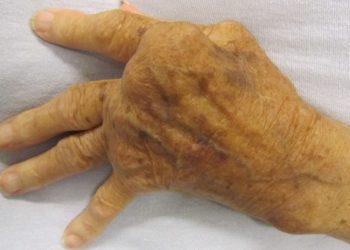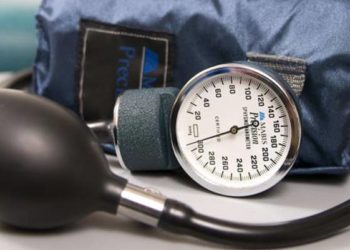#VisualAbstract: Tocilizumab is superior to rituximab for treatment of rheumatoid arthritis in patients with low or absent B-cell lineage expression
1. Among patients categorized as B-cell poor group via RNA sequencing, tocilizumab had a significantly higher response rate than rituximab.
2. Likelihood of adverse events and serious adverse events were comparable between both treatment groups.
Evidence Rating Level: 1 (Excellent)
Study Rundown: Rheumatoid arthritis is a chronic autoimmune condition with considerable morbidity and mortality worldwide. Although rituximab remains an important therapeutic option, mixed clinical response has been found regarding its efficacy. In patients with low or absent CD20 B cells, an alternative disease modifying anti-rheumatic drug (DMARD), such as tocilizumab, might be considered. This multicenter, randomized controlled trial aimed to compare the effect of tocilizumab with rituximab in patients with rheumatoid arthritis who had an inadequate response to anti-TNF stratified for synovial B-cell status. Primary outcome for this study was the difference in Clinical Disease Activity Index (CDAI) by 50% or more improvement (CDAI50%) at 16 weeks, while secondary outcomes included assessment of CDAI remission, Disease Activity Score (DAS28)-erythrocyte sedimentation rate (ESR) and DAS28-C reactive protein (CRP) response. Patients were deemed non-responders if they had CDAI50% less than 10.1 (CDAI-major treatment response; CDAI-MTR). According to study results, patients in the tocilizumab group had a significantly higher response rate compared with the rituximab group for CDAI50% in B-cell poor synovial biopsies with RNA sequencing. No statistical difference was found in patients histologically classified as B-cell poor. This study was limited by a binary design as histological classification was stratified either into B-cell poor or B-cell rich, as opposed to on a continuum. Nevertheless, this study represents the first biopsy-driven randomized clinical trial in rheumatoid arthritis.
Click to read the study in The Lancet
Relevant Reading: Trial of Upadacitinib or Abatacept in Rheumatoid Arthritis
In-depth [randomized controlled trial]: Between Feb 28, 2013, and Jan 17, 2019, 212 patients were assessed for eligibility at 19 centers across 5 European countries. Included were those ³ 18 years with previous unsuccessful treatment or intolerant to conventional synthetic DMARD therapy. Altogether, 164 patients were enrolled in the study (83 in the rituximab group and 81 in the tocilizumab group) and 161 were included in the analysis (79 B-cell poor, 64 B-cell rich, 9 germinal center positive patients, and 9 with unknown histology). The majority of enrolled patients (n=131, 77%) were female.
99% (81 of 82) patients in the rituximab group and 92% (73 of 79) in the tocilizumab group completed treatment to primary endpoint at week 16. In patients histologically classified as B-cell poor, there was no statistically significant difference in CDAI50% between the rituximab group and the tocilizumab group (45% vs. 56%, 95% confidence interval [CI] -11 to 33, p=0.31). However, supplementary analysis of CDAI-MTR – defined as patients with CDAI50% but CDAI < 10.1 – showed a statistical significance between the rituximab group and tocilizumab group (24% vs. 46%, 95% CI 2-43, p=0.035). A similar pattern was found in synovial biopsies classified as B-cell poor with RNA sequencing, in which the tocilizumab group had a significantly higher response rate than the rituximab group for CDAI50% (63% vs. 36%, 95% CI 3-50, p=0.035). The response rates for several secondary outcomes were significantly higher in the tocilizumab group than with the rituximab group. No statistical difference between treatment groups was noticed for the occurrence of adverse events (70% rituximab vs. 80% tocilizumab, 95% CI -1 to 21) and serious adverse events (rituximab 7% vs. tocilizumab 10%, 95% -5 to 10). Findings from this study suggest that tocilizumab is superior to rituximab for rheumatoid arthritis patients with low or absent B-cell lineage expression.
©2020 2 Minute Medicine, Inc. All rights reserved. No works may be reproduced without expressed written consent from 2 Minute Medicine, Inc. Inquire about licensing here. No article should be construed as medical advice and is not intended as such by the authors or by 2 Minute Medicine, Inc.







